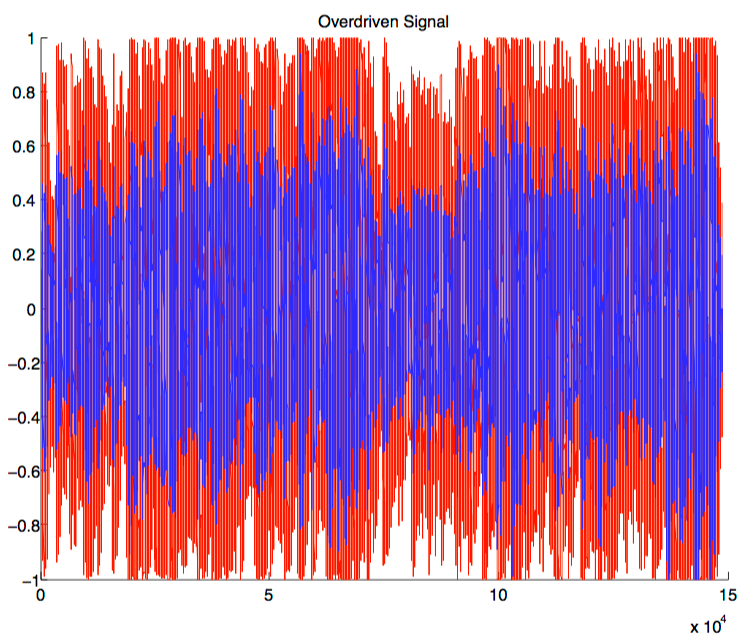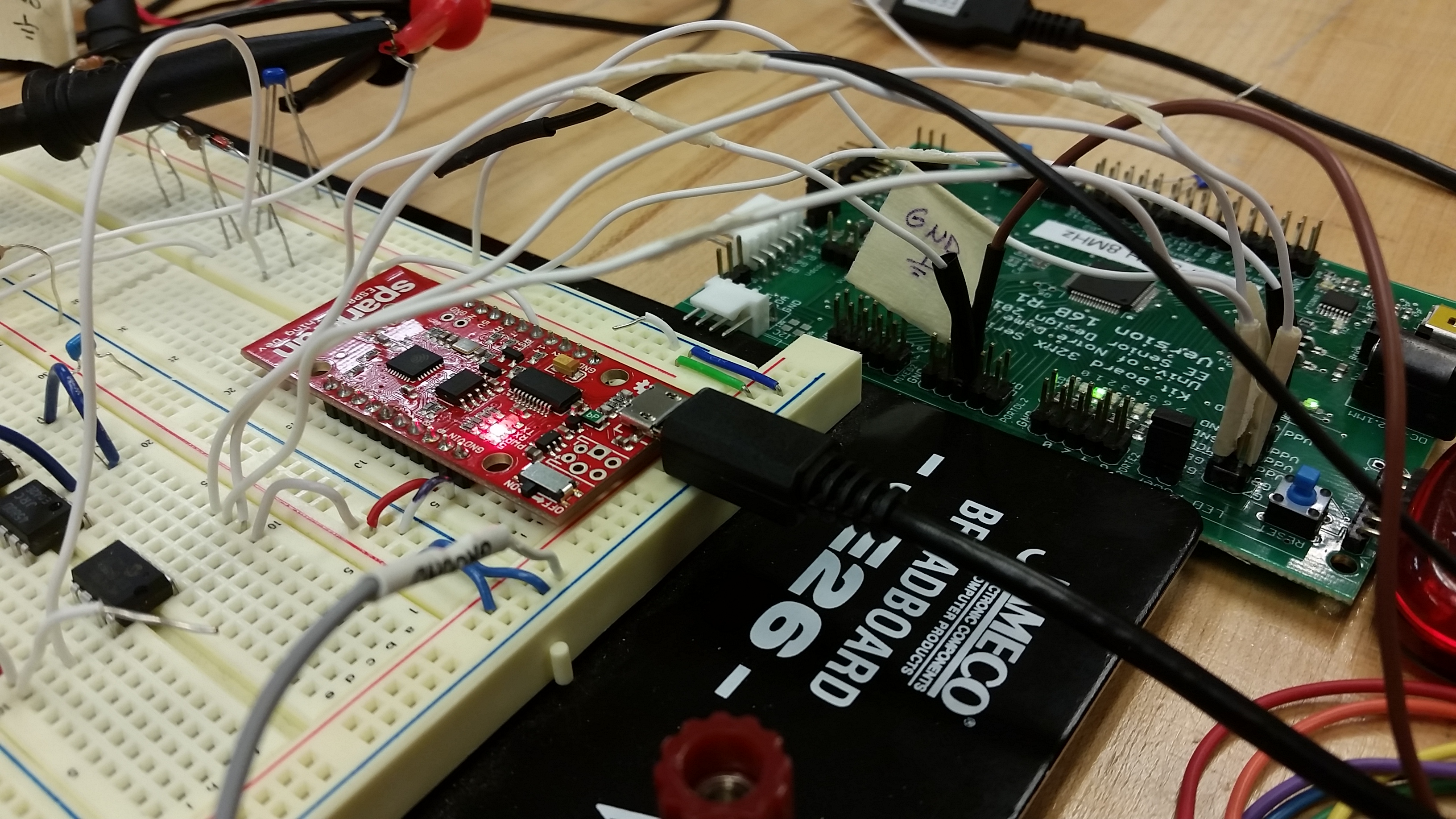Analog to Digital Conversion
We quickly implemented our own ADC and DAC after the Audio Codec proved too much of an issue. We used a series of op-amps to raise the input voltage to the proper level to then be sampled by the PIC's built-in ADC. On the output side, we recovered the signal by using an AM demodulator on a square wave.

Converting Between Analog and Digital


